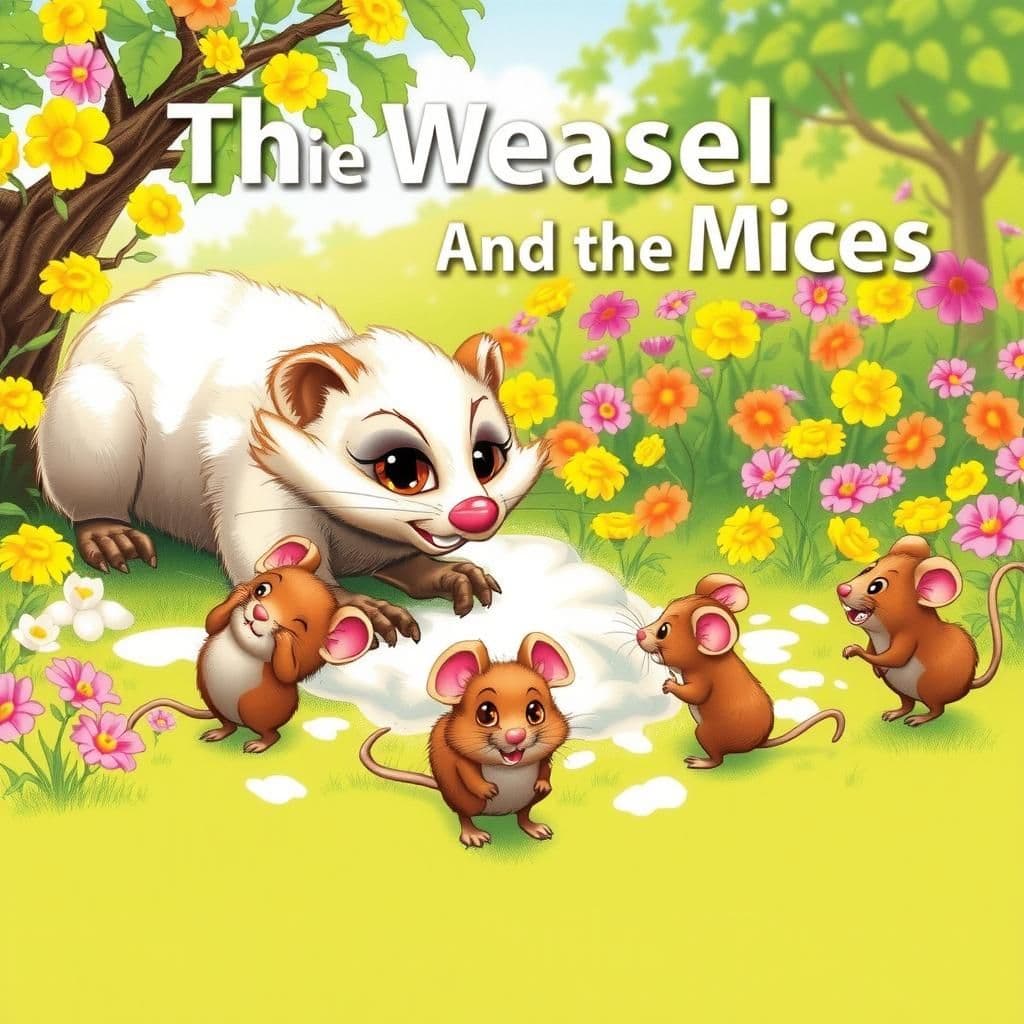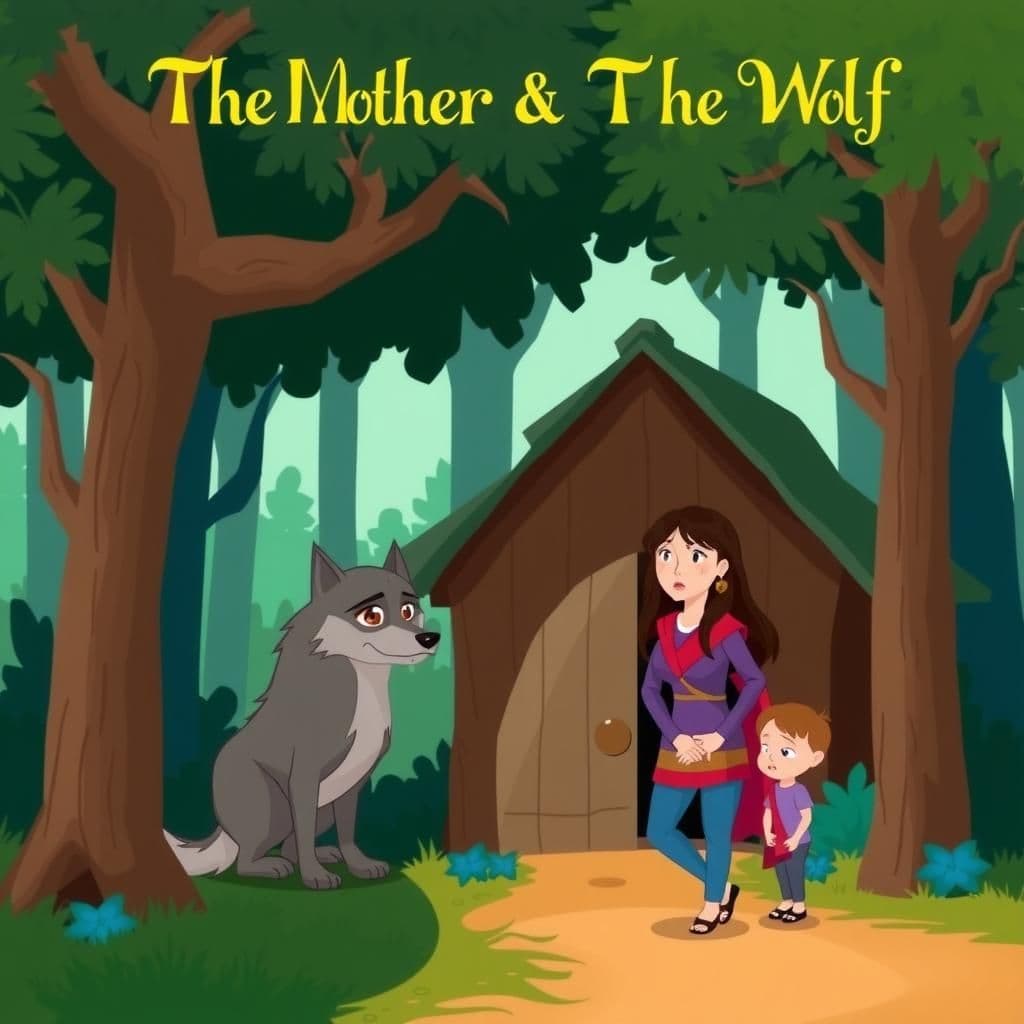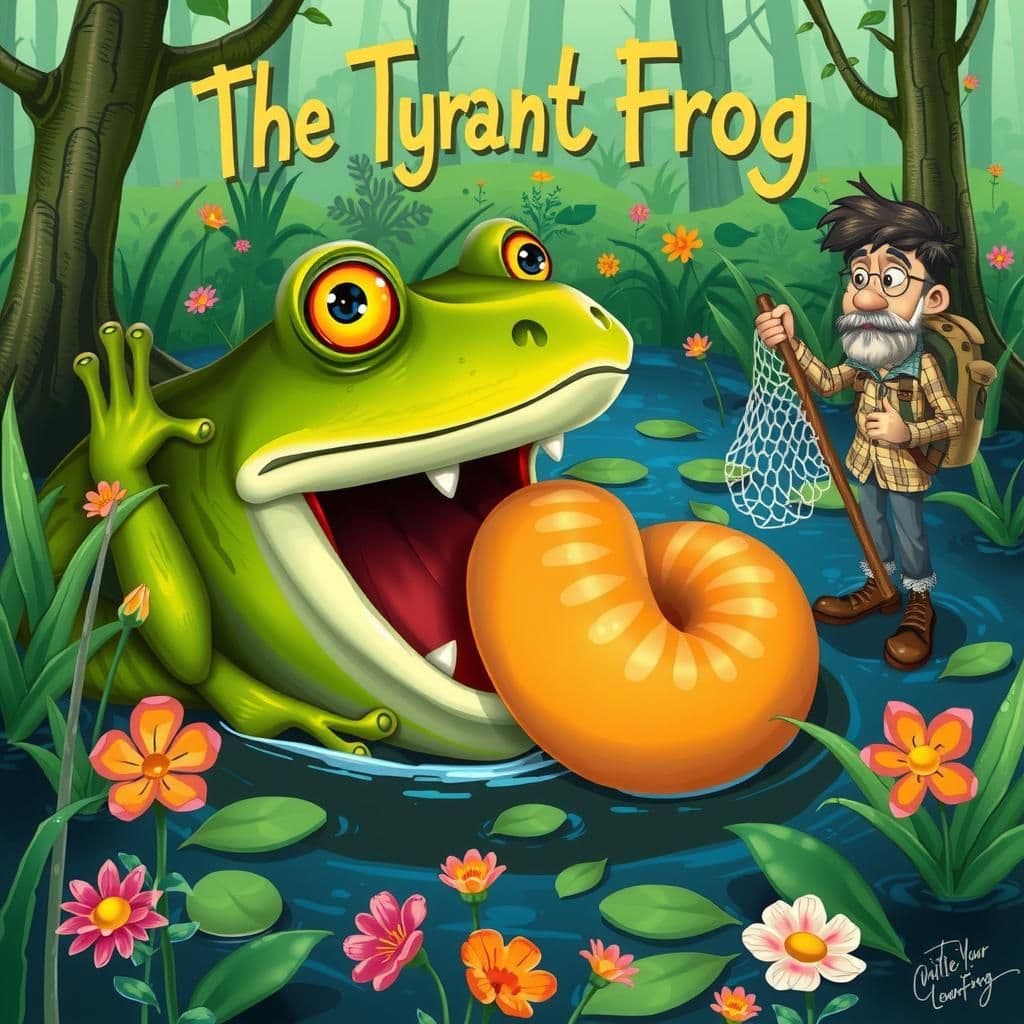The Weasel and the Mice

Story Summary
In this simple short story with moral lessons, an old weasel, unable to catch mice due to his age, disguises himself in flour to deceive unsuspecting prey. As several mice fall victim to his trap, an experienced mouse recognizes the ruse and warns others, wishing that the weasel's deceit is matched by his own success. This meaningful story illustrates the consequences of trickery and the wisdom of those who have survived many dangers.
Click to reveal the moral of the story
The moral of the story is that appearances can be deceiving, and one should be cautious of what seems too good to be true.
Historical Context
This fable resembles those attributed to Aesop, a Greek storyteller believed to have lived in the 6th century BCE. Fables like this one, which convey moral lessons through anthropomorphized animals, have been retold across cultures, emphasizing themes of deception and wisdom. The story reflects the broader tradition of didactic literature, where simple narratives serve to impart ethical teachings and caution against naivety.
Our Editors Opinion
This fable highlights the dangers of deception and the consequences of falling for false appearances, which resonates strongly in today's world where misinformation and scams are prevalent. For example, in the age of social media, individuals may encounter seemingly trustworthy influencers promoting products that aren't genuine, leading to financial loss or harm; the wise observer reminds us to be cautious and discerning, rather than blindly trusting what we see.
You May Also Like

The Mother and the Wolf
In this moral-based storytelling tale, a famished wolf waits outside a cottage after hearing a mother threaten to throw her child to him, only to later hear her reassuring the child that they would kill the wolf if he approached. Disappointed and empty-handed, the wolf returns home to explain to Mistress Wolf that he was misled by the woman's words, highlighting the importance of discerning truth in meaningful stories with moral lessons. This best moral story serves as a cautionary reminder for class 7 students about the dangers of taking words at face value.

The Tyrant Frog
In "The Tyrant Frog," a clever fable with a moral, a snake being swallowed by a frog pleads for help from a passing naturalist, who misinterprets the situation as a simple dining scenario. The naturalist, more focused on acquiring a snakeskin for his collection, highlights the importance of understanding context before jumping to conclusions. This easy small story serves as a valuable lesson in awareness and perspective, making it a fitting addition to short story collections with moral themes for personal growth.

The Hunter and the Horseman
In this humorous story with a moral, a hunter captures a hare only to be tricked by a horseman who pretends to buy it but instead steals it and rides away. Despite the hunter's futile chase, he ultimately resigns himself to the situation and sarcastically offers the hare as a gift, highlighting the absurdity of the encounter. This very short moral story illustrates the importance of accepting one's losses with a sense of humor.
Other names for this story
Cunning in Disguise, The Floury Trap, Weasel's Deception, Mice and the Masquerade, The Crafty Weasel, Flour Coated Predator, The Hidden Threat, Mice Beware!
Did You Know?
This fable highlights the theme of deception and the dangers of being lured by appearances, as the weasel, despite his age and infirmities, cunningly disguises himself to ensnare unsuspecting mice, ultimately warning against the naivety of those who fail to discern the truth behind a facade.
Subscribe to Daily Stories
Get a new moral story in your inbox every day.